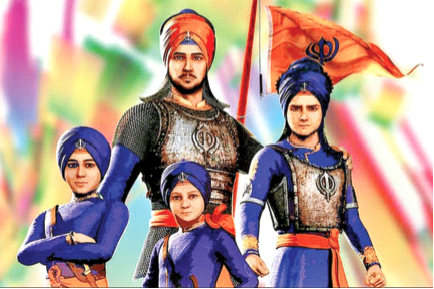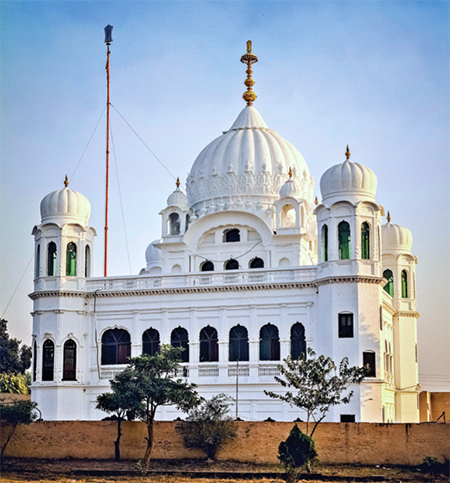Veer Bal Diwas: Honouring the Sacrifice

On January 9, 2022, the birth anniversary of Guru Gobind Singh, Prime Minister Narendra Modi announced that December 26 will be observed as ‘Veer Bal Diwas’ to mark the martyrdom of the Sikh guru’s sons Zorawar Singh and Fateh Singh. Veer Bal Diwas is observed to pay honor and tribute to the sacrifices made by Sahibzada Zorawar Singh and Sahibzada Fateh Singh. The Veer Bal Diwas is being observed to honor the ‘Sahibzadas’, the four sons of Guru Gobind Singh. On this day, Sahibzada Zorawar Singh, who was just 6 years old, and Fateh Singh who was just 9 years old, were killed by Mughal forces in Sirhind, Punjab.
Guru Nanak, founder of Sikhism, spent his last 18 years in Kartarpur, a region that went to Pakistan’s Narowal district, during Partition. Lying on the banks of river Ravi, this is also the place where the Guru took Samadhi (he lies resting). The Gurudwara Darbar Sahib at Kartarpur is considered his final resting space. But tense relations between the two countries led to difficulty for his devotees to access it.
The 4.7-kilometre-long corridor was inaugurated on November 9, 2019 to commemorate the 550th Parkash Gurpurb (birth anniversary) of Guru Nanak, the founder of Sikhism. It is believed that the Gurudwara Darbar Sahib is the final resting place of Guru Nanak. Tense ties between the two countries and the covid-19 pandemic have clouded the travel of Sikh pilgrims wishing to visit the shrine.
HISTORY
After Guru Nanak, the first guru of Sikh Panth returned from his sojourns, he settled in Kartarpur. As he assembled the Sikh community there, he established the Gurudwara Darbar Sahib in 1522. It was here in 1539, that Sikhism’s first guru breathed his last. Many consider Kartarpur as the second holiest shrine to Sikhs after Gurdwara Janam Asthan in Nankana Sahib, Pakistan, where Guru Nanak was born.
In his first political rally of 2019, Indian Prime Minister Narendra Modi stated that the Congress government in 1947 “could not keep this place (Gurdwara Kartarpur Sahib) with the country”. He was speaking at a rally in Gurdaspur, which is the correct place to understand Kartarpur’s fate during partition. For over 70 years, devotees could only gaze across the border to Kartarpur Darbar Sahib (with binoculars) from a high embankment near Dera Baba Nanak. That’s why since the corridor, the ability to physically pay obeisance at Kartarpur has huge emotional resonance for Sikhs.
HOW TO ACCESS IT:
By air: The closest airport is Amritsar, 48.7km from Kartarpur Corridor Border Terminal, the entry point to the corridor. By train: Closest railway stations to Passenger Terminal Building (PTB) at Dera Baba Nanak in Gurdaspur, Punjab are Batala Junction (25km), Chhina (26km) and Ramdas (13km). Transport is available at the entry Terminal to the Corridor. No passport or visa is required.
Over lacs of Indians and Overseas Citizenship of India (OCI) cardholders have visited the Gurdwara Darbar Sahib in Pakistan using the cross-border Kartarpur corridor thus far. The corridor linking Dera Baba Sahib in India’s Gurdaspur with the gurdwara in Pakistan’s Kartarpur was opened in November 2019 in a historic people-to-people initiative. Recently in a heartwarming event, a Pakistani woman and her Indian brother were reunited after an agonizing 74-year separation at the Kartarpur corridor. This corridor, a passage connecting the two nations, has emerged as a symbol of hope.




















Comments